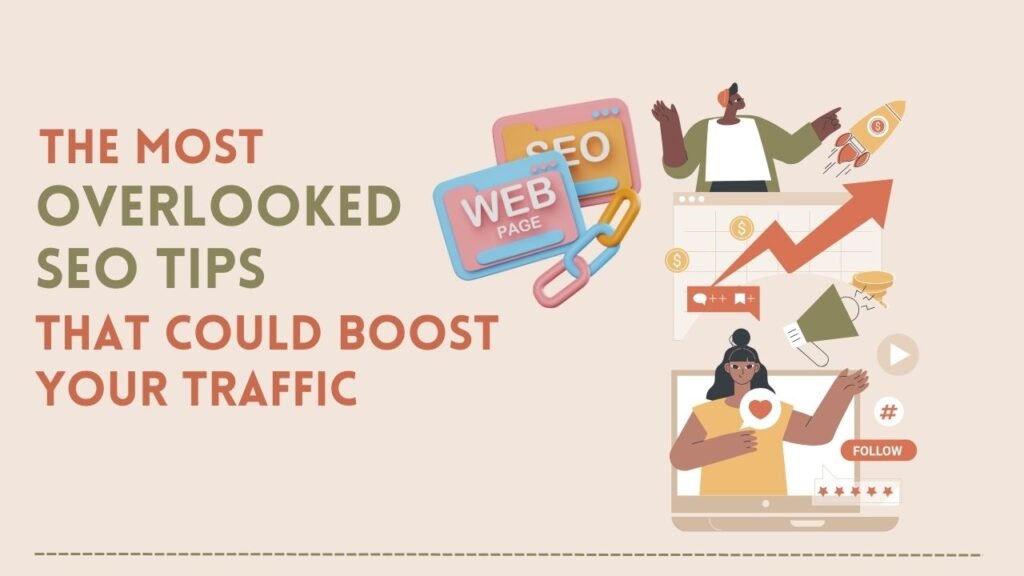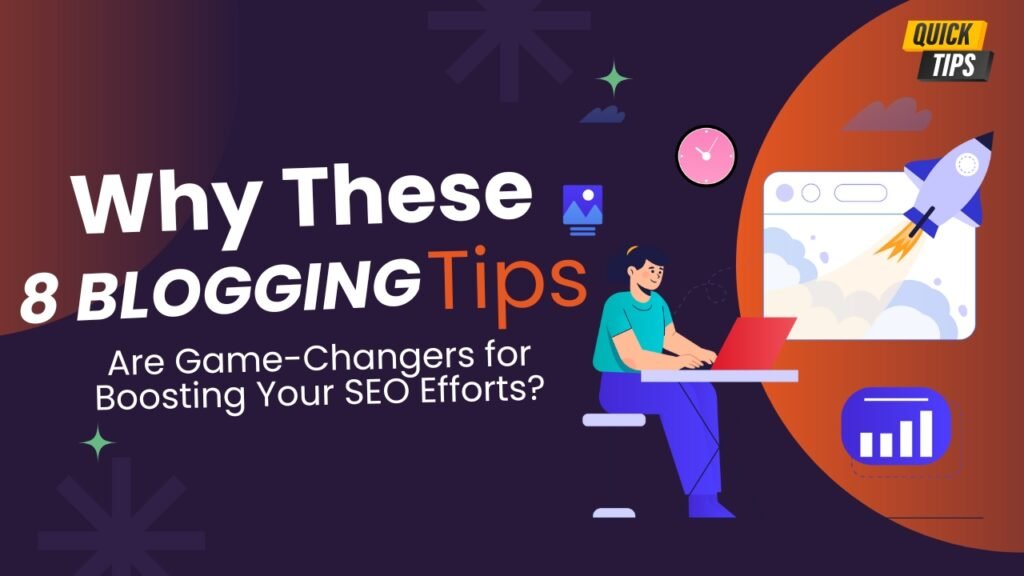The Overlooked Importance of SEO
In a rapidly developing digital world, SEO is one of the cornerstones that helps individuals and businesses achieve success. However, most people forget some simple SEO tactics which can boost their web traffic significantly. The first step to proper utilization of it lies in realizing that it has an important place in the today’s digital era.
Why is SEO so Important Today?
Since the internet is the sole repository for information and services for billions, your website needs to rank higher on Google. The reason SEO is important is not that improving your site’s visibility is a pursuit in itself, but because it is a matter of competing with fast-changing digital times. If you don’t pay attention to SEO, you might be missing out on millions of organic traffic-they are the oxygen businesses breathe online.
Stereotypes about SEO
Many myths float around in the SEO world. Some believe it is a one-time setup and only big companies must put money into it. The truth of the matter is that SEO is a process that requires constant updates and care. It’s not only for big companies; small and medium companies can gain much from smart SEO strategies.
Understanding Long-Tail Keywords
Keywords are the backbones of search engine optimization, and just using generic or overly competitive keywords may not work well. Long-tail keywords are an ignored feature in SEO that can bring targeted traffic to your site.
What are long-tail keywords?
Long-tail keywords are phrases that visitors use when they are practically close to making a purchase or finding the information needed. Compared to one-word keywords, these phrases usually are more descriptive and less competitive. For example, while you might have targeted “shoes” as the keyword, targeting “comfortable running shoes for women” might be much more efficient.
Benefits of Targeting Long-Tail Keywords
What are the advantages of long-tail keywords? Long-tail keywords bring several benefits, like a conversion rate increase, more qualified leads, and improvements in user experience in terms of content, which closely meets the intent of the searcher so that you have greater chances of reaching those users who are ready to interact with your content or buy a product.
Optimizing Image SEO
Whereas images are that part of any website which is visually important, they also contribute a lot to your SEO strategy. Optimizing images for SEO gives your site a well-designed look and enhances its visibility in the search results as well.
How Does Image Alt Text Affect SEO?
Image alt text is a description of an image applied by search engines to understand the content of the image. Using relevant keywords in your alt text can really improve the SEO of your site because your images will become more searchable. Thus, your site will get more traffic since it appears on image search results.
Best Practices in Optimizing Images
Optimizing images for search engine optimization also ensures proper usage of file format, compression of images, and giving clear descriptions of file names. Use descriptive and concise alt text that encapsulates the relevance of your images. This not only helps in furthering the SEO appeal for your website but also enhances user experience by gaining your site greater accessibility.
Also Read: SEO Tips for Bloggers: Increase Your Traffic by 300%
Utilizing Internal Links Effectively
Internal linking is a very strong SEO tool that nobody uses. Strategically linking your website will let the search engine understand the structure of your website and improve navigation for users on your site.
What are Internal Links?
Internal links are the links pointing from one page on your site to another page in the same domain. These links spread link equity across your site and improve ranking for individual pages and overall SEO of your website.
Strategic Internal Linking for SEO
The best link of internal linking is toward the highly relevant content, hence of good quality within your site. Involve your target keywords in the anchor text so not only will this provide additional useful information to your users but also make the search engines crawl and index your site more efficiently.
Mobile-Friendly Optimization
With growth in mobile search, it has become quite impossible to hold on for long without having a website that supports mobile. This requires you to optimize your website for better SEO and the experience it gives to a user on his or her mobile.
Mobile Search Increase
More people have turned up using mobile phones to seek web results in their entire lives. More and more, Google provides search rankings for websites friendly to the mobile users than not to those which aren’t so.
Make Your Website Mobile Friendly
Make sure the webpage is responsive in nature-meaning it has to change according to screen sizes. Other than that, optimize the loading time of your site by compressing images and good coding practices. Finally, test your website on several devices.
Leveraging Local SEO
As part of your SEO strategy, local SEO is the most important aspect for businesses dealing primarily with locals. The optimization of local SEO will allow your business to rank in local search results and eventually attract more locals.
Why Local SEO Matters?
It is very important for businesses with particular geographic operations. You are likely to be found by those approaching customers in your area if you optimize for local searches. More traffic will be driven to your site, and brand awareness in your local community will be built gradually.
How Do I Optimize for Local SEO?
Claim and optimize your Google My Business listing: always with the most accurate and updated business information, including address, phone number, business hours, and so on. Optimize content and meta descriptions with pertinent local keywords to help boost visibility in the search results.
Enhancing Page Load Speed
Page loading speed has a special place in SEO. If your page loads too slowly, this can damage your SEO rankings and user experience.
Impact of Page Load Speed on SEO
Site speed is among some of the ranking factors for search engines like Google. The slower your website loads, the higher the bounce rates and lesser the ranking in your search engine results. Improve your page load speed to improve user experience and boost your chances on search results ranking.
Some Tips to Improve Page Load Speed
That is, you would have to optimize all your images, so then use a CDN, thus be sure to minimize any heavy scripts and plugins and, most importantly, bring into use browser caching to make it work fast. Periodically test the speed of your site with Google PageSpeed Insights and adjust it to enhance performance.
Schema Markup Utilization
Schema markup is one of the powerful yet least used SEO tools. It adds schema markup to enhance your visibility in search results and improve the user experience.
What is Schema Markup?
This type of microdata is schema markup, which, in practice, really simplifies for the search engine what’s on your website. Additionally, schema markup makes more accessible details about your site, including descriptions of a product, reviews, or maybe information about events, which may appear within the search results.
Implementing Schema Markup for Better SEO
You can start implementing schema markup by identifying what kind of content on your website will deserve schema markup. You will then generate the requisite code using schema markup generators and add it to the HTML of your website. Not only will this help boost the SEO of your website, but it will also make your website more visually appealing because it provides richer details inside search results.
Voice Search Optimization
The more voice-activated devices the masses start using, the more the demand for voice search optimization becomes a part of SEO. Optimizing your content to make it voice search-friendly improves visibility of your site and delivers more targeted traffic.
Increasing Importance of Voice Search
Voice search is changing how people search on the internet. With the increases in numbers using Amazon Echo and Google Home, it is evidence that optimizing your content for voice search will be at the top to which users are reaching.
How to Optimize Content for Voice Search?
So the content needs to be optimized for the voice search, and natural speech and conversational phrases work best. Long-tail keywords and question-based queries are important because these are how people speak. The website needs to be mobile-friendly and loads quick, which will be fantastic for voice search users.
Also Read: SEO Tips for Local Businesses to Attract More Customers in 2024
Engaging and Quality Content Creation
Content is the king in the SEO world. It is simply engaging and high-quality content alone enough to attract and retain visitors into any blog or website.
Why Quality Content Matters?
Quality content enhances both SEO value for your site and the user experience. Of all the engaging things you want to do, you increase visitors’ likelihood of staying on your site and interacting with your content. Boosting the ranks of your SEO not only establishes your success on search but makes it easy to build trust and credibility in your audience.
How to Create Engaging Content?
First, understand who you are posting for and what they need. Make the post more interesting, conversational, and relatable by putting in personal anecdotes and analogies. Applying images, videos, and infographics will also break up the text and make your content extremely appealing to the eye.
User Experience (UX) and SEO
User experience has a close relation with SEO. Good experience would therefore improve your site’s SEO rankings and contribute to getting more visitors.
How Does UX Affect SEO?
Search engines favor sites that ensure a good user experience. Some of the elements under UX include page loading speeds, mobile-friendliness, and navigation. These might affect your site’s visibility in search engines. Chances of visitors staying on and interacting with content increase in case of a good UX on your website.
Improving UX Improves SEO Results
Improving the UX of your site involves a clean and intuitive design which is passed across easily. Your site must be mobile-friendly and speedy so it may offer one smooth experience to all users. You have to use clear and concise language in your content, and that content should not be too hard to read or understand.
SEO Audit and Analysis
You will have to keep and enhance your site’s SEO through periodic SEO audits and analysis. Generally, an SEO audit helps identify areas to improve on, thus ensuring that your site is optimized for search engines.
Why Do You Need to Have Regular SEO Audits?
From the SEO audit, you will be informed of any technical problems, gaps in content, and such other issues that may hamper your site’s SEO. Regular audits would help to stay ahead of problems and ensure that your site is search-engine optimized.
Tools for SEO Audits
Some of the tools which can be utilized for SEO audits are Google Analytics, Google Search Console, and third-party audit tools like SEMrush and Ahrefs. Using any of these tools will help in finding technical issues as well as track the performance of a site based on recommendations about improving it.
Link Building Strategies
Amongst all the necessary steps of a search engine optimization technique, link building is the most important part. Correct link building can place your website at a better position in an SEO search and bring more visitors to your website.
Role of Backlinks in SEO
Links from other sites to your site are often referred to as backlinks. They are an extremely vital source in SEO because the search engines use them to determine the authority and relevance of your site. Quality links will increase the ranking of your site and give you more visitors.
Good Techniques of Link Building
First, create content that is relevant, high-quality, shareable content, and others would love to link to for obtaining quality backlinks. Start by reaching out to industry influencers and bloggers to help spread the word about your valuable contents and build a relationship. Expand your reach to more potential backlink attractors using social media and guest blogging.
Monitoring and Adapting to SEO Trends
The world of SEO is constantly changing, and there’s just no choice but to stay updated. This can best be achieved through keeping an eye on the latest trends as well as developments within and around SEO, to keep that competitive edge as well as improve your site’s standing in rankings.
The Ever-Changing SEO Landscape
SEO changes daily, and what used to work a couple of years ago now does not cut it. You can adjust your SEO approach according to changing search engines’ needs and user expectations by being informed about the latest trends and updates.
Keeping up with SEO Trends
There are many ways you could keep yourself updated with the latest trends in the course, starting with reading through industry blogs and publications and listening to webinars and going to conferences. Do not forget to join the wider SEO community that goes on social media. By doing these, you should continually update your SEO strategy to reflect the most recent industry trend or change.
SEO and Social Media Integration
Social media and SEO are closely related, and integrating your strategy between the two can make a big difference in advancing your site’s visibility and will drive more traffic.
The Synergy Between SEO and Social Media
Social media is actually able to increase the SEO for your site through the flow of traffic and engagement. Increased visibility is another plus to promotions on social media platforms since it leads to more backlinks, thus improving your website rankings.
Using Social Media for Enhanced SEO
The first step for enhancing your SEO using social media involves creating shareable content that will appeal to your audience. Leverage social media channels in order to promote content and interact with followers. Monitor social media metrics and track changes in your plan.
Conclusion
In summary, SEO is an integral part of any online strategy; if the necessary SEO tips are not adopted, it may hamper the performance of your website and its visibility. Adoption of these overlooked SEO tips will indeed enhance rankings, attract more traffic, and enhance the user experience. Remember that SEO forms a never-ending process requiring constant updating and attention. Keep track of the latest trends and best practices and continue to optimize the site for the desired outcome.
Also Read: Why These 8 Blogging Tips Are Game-Changers for Boosting Your SEO Efforts?
FAQs
What myths should we dispel about SEO?
Well, probably at least three things: most people think of SEO as setting it and forgetting it or that only huge companies need SEO. The reality is, SEO is an ongoing process for businesses of all sizes.
How can I create my site to be mobile-friendly?
Use a responsive design, optimize your images, and test it on lots of different devices so you know your site works well for the user on mobile.
Why does SEO use long-tail keywords?
Long-tail keywords are less competitive and more specific, attracting more qualified leads and better conversion rates.
What is the benefit of internal linking to SEO?
Internal linking lets search engines know the structure of your website, helps improve navigation for users, and distributes link equity to other areas of your website.
What is schema markup and why does it matter for SEO?
Schema markup, in essence, is microdata that helps make search engines understand your content better and thus makes it more visible and attractive for the user in the search results.



